Why Your iPhone’s Satellite Emergency SOS Isn’t Enough for Serious Outdoor Adventures: A Complete Safety Guide
Last updated: June 2025
When Apple introduced satellite Emergency SOS capabilities, it seemed like a game-changer for outdoor enthusiasts.
Finally, the device already in everyone’s pocket could serve as a lifeline in remote areas without cell coverage. The iPhone SOS feature promised to revolutionize backcountry safety by enabling emergency communication even when traditional cellular networks are unavailable.
But if you’re planning serious backcountry adventures—whether on motorcycle expeditions, deep wilderness hikes, or remote hunting trips—relying solely on your iPhone SOS mode could be a dangerous mistake.
The issue isn’t Apple’s satellite technology, which is genuinely innovative.
The problem is fundamental: your iPhone simply isn’t built to survive the conditions that typically require emergency satellite communication.
Many outdoor enthusiasts discover this harsh reality when their device fails precisely when they need the iPhone SOS functionality most.
Understanding when to rely on iPhone SOS mode versus dedicated satellite communicators could be the difference between a successful rescue and a tragic outcome.
The Hard Truth About iPhone Durability in Extreme Conditions
Real-World Durability Testing
Over two years of extensive field testing across various outdoor scenarios, a clear pattern emerges: iPhones consistently fail when subjected to the real-world conditions that outdoor enthusiasts regularly encounter.
This isn’t casual use—it’s the kind of punishment that happens during:
- Motorcycle adventures through rough terrain
- Backcountry hunting in dense forests
- River crossings and water sports
- Mountain climbing and rock scrambling
- ATV/UTV expeditions on challenging trails
- Winter sports in extreme conditions
The Fragility Factor
Despite protective cases and careful handling, modern iPhones demonstrate a concerning vulnerability to impact damage.
Multiple iPhone 13 models failed during normal outdoor activities—not from dramatic falls or obvious abuse, but from the accumulated stress of authentic outdoor use.
This fragility becomes critical when you consider the scenarios where satellite emergency features are most needed:
- Falls from vehicles (motorcycles, ATVs, snowmobiles)
- Accidents during climbing or hiking
- Equipment failures in remote locations
- Medical emergencies in challenging terrain
In these situations, the very events that necessitate emergency communication often involve impacts that can easily damage an iPhone 16 beyond functionality.
Dedicated Satellite Communicators: The Reliable Alternative
Garmin inReach Mini 2: The Gold Standard
After extensive testing under extreme conditions, the Garmin inReach Mini 2 consistently demonstrates superior durability:
Survival Test Results:
- ✅ Submersion in river water for 30+ minutes
- ✅ Run over by ATV, UTV, and full-size truck
- ✅ Multiple impacts against rock faces during climbing falls
- ✅ Motorcycle crashes and mud submersion
- ✅ Two years of continuous harsh treatment
Key Advantages:
- Two-way messaging capabilities
- GPS tracking for search and rescue
- Weather updates and forecasts
- Rugged construction designed for abuse
- Long battery life (up to 14 days in tracking mode)
- Dedicated SOS button easily accessible even with gloves
Alternative Options: Zoleo and SPOT X
- Similar durability to Garmin inReach
- Excellent two-way messaging
- Competitive pricing
- Strong app integration
- Reliable SOS functionality
- Proven track record in emergencies
- Various models for different needs
- Two-way messaging capabilities
- Lower cost entry point
- Excellent battery life
Understanding iPhone Satellite Emergency SOS Limitations
What Apple’s System Does Well
Apple’s satellite Emergency SOS technology represents genuine innovation.
When your iPhone enters iPhone SOS mode, it provides several valuable capabilities:
- Accessibility: No additional monthly fees for basic emergency services
- Integration: Seamless with existing iPhone features and emergency contacts
- Ease of use: Familiar interface that most users already understand
- Availability: Standard feature on iPhone 14 and newer models
- Coverage: Direct partnership with emergency response services
The iPhone SOS only approach works by connecting to Globalstar satellites when cellular and Wi-Fi are unavailable, automatically sharing your location and basic emergency information with authorities.
Critical Limitations for Outdoor Enthusiasts
1. Hardware Vulnerability
- Glass construction susceptible to impact damage
- Aluminum frame can bend under stress
- Screen damage prevents interface access
- Water resistance limited to specific conditions
2. Functional Constraints
- One-way communication only (no messaging back and forth)
- Limited battery life during extended trips
- Screen dependency for all functions
- Weather sensitivity affecting touchscreen operation
3. Service Limitations
- Geographic restrictions in coverage
- Clear sky requirements for satellite connection
- Emergency services only (no general communication)
- Potential delays in message delivery

Choosing the Right Satellite Communication Strategy
For Casual Day Hikers and Light Outdoor Activities
iPhone SOS mode may be adequate if:
- Trips are typically under 8 hours
- Activities have low impact risk
- Multiple people in your group have devices
- You’re hiking established trails with good satellite visibility
- Your phone is well-protected and unlikely to suffer damage
Recommendation: iPhone SOS can serve as your primary emergency communication for low-risk activities, but consider upgrading to dedicated devices as your adventures intensify.
For Serious Outdoor Enthusiasts
Dedicated satellite communicators are essential for:
- Multi-day expeditions in remote areas
- High-risk activities (climbing, extreme sports)
- Solo adventures where redundancy is critical
- Professional guides responsible for group safety
- Expedition-style travel with valuable equipment
The Hybrid Approach: Maximum Safety
The most comprehensive safety strategy combines both:
- Primary: Dedicated satellite communicator (Garmin inReach, Zoleo)
- Backup: iPhone with satellite Emergency SOS
- Additional: PLB (Personal Locator Beacon) for ultimate emergencies
Essential Features to Look for in Satellite Communicators
Core Functionality
- Two-way messaging for detailed communication
- GPS tracking and navigation capabilities
- Weather updates and forecasts
- SOS emergency beacon with 24/7 monitoring
- Long battery life (minimum 7-14 days)
Durability Requirements
- IPX7 waterproof rating or better
- Impact resistance to survive drops and crashes
- Temperature tolerance for extreme conditions
- Dust and debris protection
- Reliable buttons that work with gloves
Communication Features
- Global coverage or coverage for your target areas
- Fast message delivery (under 5 minutes typical)
- Emergency response integration with professional services
- Group messaging capabilities
- Social media integration for trip updates
Cost Analysis: Investment in Safety
Initial Investment Comparison
| Device Type | Price Range | Monthly Fee | Total First Year |
|---|---|---|---|
| iPhone Satellite SOS | $0* | $0* | $0* |
| Garmin inReach Mini 2 | $400-450 | $15-65/month | $580-1,230 |
| Zoleo | $200-250 | $20-50/month | $440-850 |
| SPOT Gen4 | $150-200 | $12-25/month | $294-500 |
*Included with iPhone 14+ for first two years
Value Calculation
When evaluating cost, consider:
- Replacement cost of multiple broken iPhones
- Peace of mind during high-risk activities
- Enhanced trip experience with two-way communication
- Group coordination capabilities
- Weather and navigation benefits
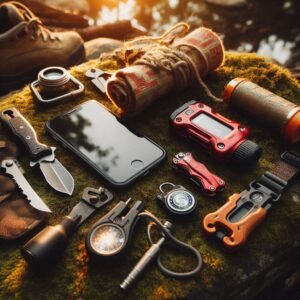
Professional Recommendations by Activity Type
Rock Climbing and Mountaineering
Primary Choice: Garmin inReach Mini 2
- Compact size for technical climbing
- Excellent durability against rock impact
- Two-way messaging for route updates
- Weather forecasts critical for safety
Motorcycle Adventure Touring
Primary Choice: Garmin inReach Explorer+
- Larger screen for navigation
- Excellent crash survival record
- Group tracking for riding partners
- Emergency contacts can follow progress
Backcountry Hunting
Primary Choice: Zoleo or Garmin inReach
- Silent operation modes
- Long battery life for extended trips
- Two-way messaging with family
- GPS tracking for game recovery
Sea Kayaking and Water Sports
Primary Choice: Garmin inReach Mini 2 with floating lanyard
- Superior water resistance
- Compact size for PFD attachment
- Critical for offshore paddling
- Coast Guard integration
Setting Up Your Emergency Communication Plan
Before You Leave
- Test your devices in various conditions
- Set up emergency contacts with detailed information
- Share trip plans with reliable contacts
- Check satellite coverage for your destination
- Practice emergency procedures with your group
Emergency Contact Information to Program
- Primary emergency contact (family member)
- Secondary contact (local friend/colleague)
- Local emergency services (if different from 911)
- Medical information (allergies, conditions, medications)
- Insurance information (policy numbers)
Communication Protocol
Establish clear protocols for:
- Check-in schedules with emergency contacts
- Emergency code words or phrases
- Escalation procedures if contact is missed
- Group communication during activities
- Device sharing if primary unit fails
Maintenance and Care for Satellite Communicators
Regular Maintenance Tasks
Monthly:
- Check battery level and charging capability
- Test SOS function (without activation)
- Verify firmware updates
- Clean device and inspect for damage
Before Each Trip:
- Full battery charge
- Subscription status verification
- Emergency contact information update
- Weather and coverage check
After Each Trip:
- Clean and dry thoroughly
- Inspect for damage
- Charge battery to storage level
- Download and review tracking data
Common Maintenance Issues
- Battery degradation after 2-3 years of heavy use
- Button wear from frequent use with gloves
- Antenna damage from impacts
- Water damage from seal failure
- Software issues requiring factory reset
Future of Satellite Communication Technology
Emerging Technologies
Several developments may change the landscape:
Apple iPhone Ultra Concept: A theoretical ruggedized iPhone with:
- Titanium construction similar to Apple Watch Ultra
- Enhanced durability for outdoor use
- Improved satellite communication capabilities
- Better battery life for extended use
Starlink Integration:
- Higher bandwidth satellite communication
- Faster message delivery
- Potential for voice calling
- Improved global coverage
5G Satellite Networks:
- Direct smartphone connectivity
- Reduced need for specialized hardware
- Enhanced emergency services integration
- Better indoor/covered area performance
What This Means for Outdoor Enthusiasts
While technology continues advancing, the fundamental durability question remains.
Until smartphones match the ruggedness of dedicated satellite communicators, serious outdoor enthusiasts should maintain separate emergency communication devices.

FAQ: Satellite Emergency Communication
General Questions
Q: Can I rely on my iPhone 14’s satellite Emergency SOS for backcountry trips? A: For casual day hikes with low impact risk, iPhone SOS mode provides basic emergency capability.
However, the iPhone SOS only approach has significant limitations for serious backcountry adventures.
When activities involve potential impacts, weather exposure, or multi-day trips, dedicated satellite communicators offer superior reliability and functionality.
The key limitation isn’t the iPhone SOS technology itself, but the phone’s fragility in conditions where emergency communication is most needed.
Q: How much does satellite communication service cost? A: Costs vary significantly:
- iPhone satellite SOS: Free for first 2 years (iPhone 14+), then pricing TBD
- Garmin inReach: $15-65/month depending on message volume
- Zoleo: $20-50/month for various plans
- SPOT: $12-25/month for basic to premium services
Q: When should I activate iPhone SOS mode during an emergency? A: Activate iPhone SOS mode immediately when facing a genuine emergency where you need professional rescue assistance.
The system works by holding the side button and volume button simultaneously, then sliding the Emergency SOS slider.
However, remember that iPhone SOS only works if your device is functional and has clear sky access.
For non-life-threatening situations where you need help but aren’t in immediate danger, consider other communication methods first to avoid tying up emergency resources.
Q: What’s the difference between one-way and two-way satellite communication? A: One-way communication (like iPhone SOS only or basic SPOT devices) sends distress signals or predetermined messages to emergency services.
Two-way communication allows back-and-forth messaging, enabling detailed coordination with emergency services, weather updates, and family communication.
While iPhone SOS gets help coming, two-way devices let you provide updates and receive instructions during the rescue process.
Q: Do satellite communicators work under tree cover? A: All satellite communicators require clear view of the sky for optimal performance.
Dense forest canopy can interfere with signal transmission.
Devices vary in sensitivity, with some performing better in marginal conditions than others.
Q: How long does it take for emergency messages to be received? A: Message delivery times vary:
- Emergency SOS: Typically 15 seconds to 1 minute in clear conditions
- Two-way communicators: Usually under 5 minutes for standard messages
- Weather and terrain can increase delivery times significantly
Technical Questions
Q: What satellite networks do these devices use? A: Different devices use various networks:
- iPhone: Globalstar satellite network
- Garmin inReach: Iridium satellite constellation
- SPOT: Globalstar network
- Zoleo: Iridium network
Iridium provides better global coverage, including polar regions, while Globalstar has good coverage in populated areas but gaps in remote regions.
Q: Can I use satellite communicators internationally? A: Coverage varies by device and service plan:
- Iridium-based devices (Garmin inReach, Zoleo): Global coverage including oceans and poles
- Globalstar-based devices (SPOT, iPhone): Good coverage in North America, parts of Europe, but limited in Africa, Asia, and oceanic regions
Always verify coverage for your specific destination before traveling.
Q: What happens if my satellite communicator breaks during a trip? A: This is why many serious outdoor enthusiasts carry multiple communication methods:
- Primary: Dedicated satellite communicator
- Backup: Smartphone with satellite capability
- Emergency: Personal Locator Beacon (PLB)
- Group redundancy: Multiple devices among team members
Q: Do I need special training to use satellite emergency features? A: While devices are designed to be intuitive, practice is recommended:
- Familiarize yourself with device operation before trips
- Practice composing emergency messages
- Understand how to activate SOS features
- Know what information to include in emergency communications
- Test devices in various weather conditions
Safety and Legal Questions
Q: Are there legal requirements for satellite communicators in certain areas? A: Requirements vary by location and activity:
- Some wilderness permits require communication devices
- Commercial guiding operations often mandate emergency communication
- International travel may have import/export restrictions
- Some countries restrict satellite communication devices
Check local regulations before traveling.
Q: What should I include in an emergency satellite message? A: Emergency messages should be concise but complete:
- Your exact location (GPS coordinates if possible)
- Nature of emergency (medical, mechanical, weather)
- Number of people involved
- Injuries or immediate dangers
- Resources available (shelter, water, first aid)
- Planned actions (staying put, moving to safer location)
Q: Can search and rescue track my location with these devices? A: Tracking capabilities vary:
- Devices with GPS tracking: Continuous location updates
- Emergency activation: Precise location sent with SOS
- Breadcrumb tracking: Historical path information
- Some devices allow emergency contacts to follow your progress in real-time
Q: What’s the difference between satellite communicators and Personal Locator Beacons (PLBs)? A: Key differences include:
- PLBs: Emergency-only, no messaging, no subscription fees, 24+ hour battery life
- Satellite communicators: Two-way messaging, subscription required, additional features like weather
- PLBs connect directly to search and rescue networks
- Satellite communicators often use commercial monitoring services
Many serious adventurers carry both for maximum safety redundancy.
Making the Right Choice for Your Adventures
The introduction of satellite emergency features in smartphones represents a significant step forward in outdoor safety technology.
Apple’s innovation has brought emergency satellite communication to millions of users who previously had no backup plan for remote area emergencies.
However, the fundamental challenge remains: smartphones are not designed for the harsh realities of serious outdoor adventures.
The very situations that require emergency satellite communication—falls, crashes, extreme weather, and equipment failures—are exactly the conditions most likely to damage a smartphone beyond functionality.
For casual outdoor activities and as a backup communication method, iPhone satellite Emergency SOS provides valuable safety enhancement.
But for serious outdoor enthusiasts engaged in high-risk activities, multi-day expeditions, or professional guiding, dedicated satellite communicators remain the gold standard for emergency communication reliability.
The investment in a dedicated satellite communicator isn’t just about the device—it’s an investment in comprehensive safety that includes superior durability, two-way communication, extended battery life, and proven performance in extreme conditions.
When your life depends on getting a message through, the extra cost and weight of a dedicated device become insignificant compared to the peace of mind and enhanced safety they provide.
Consider your specific activities, risk tolerance, and the consequences of communication failure when making this critical safety decision.
For many outdoor enthusiasts, the question isn’t whether to carry satellite communication—it’s which devices provide the best combination of reliability, functionality, and durability for their specific adventures.
Please keep in mind: the best emergency communication device is the one that works when you need it most.
In the unforgiving environment of serious outdoor adventures, that device needs to be as tough and reliable as you are.
This Outdoor Tech Lab guide is based on extensive field testing and real-world experience.
Always consult current manufacturer specifications and coverage maps before relying on any communication device for emergency situations.
Consider professional wilderness safety training to complement your communication equipment.
- Compact, lightweight satellite communicator enables two-way messaging and interactive SOS globally (Active satellite sub…
- Navigate back to where you started by using TracBack routing
- Share your location with loved ones back home at any time (active satellite subscription required) by using your MapShar…
- Global satellite messaging: Stay connected beyond cell coverage, use ZOLEO with your smartphone to transmit text message…
- Emergency SOS: Send an SOS alert with your GPS location to 24/7 emergency monitoring center if something goes wrong, or …
- Dedicated SMS number: An assigned ZOLEO SMS number and email enables contacts to reach out directly when you’re off the …
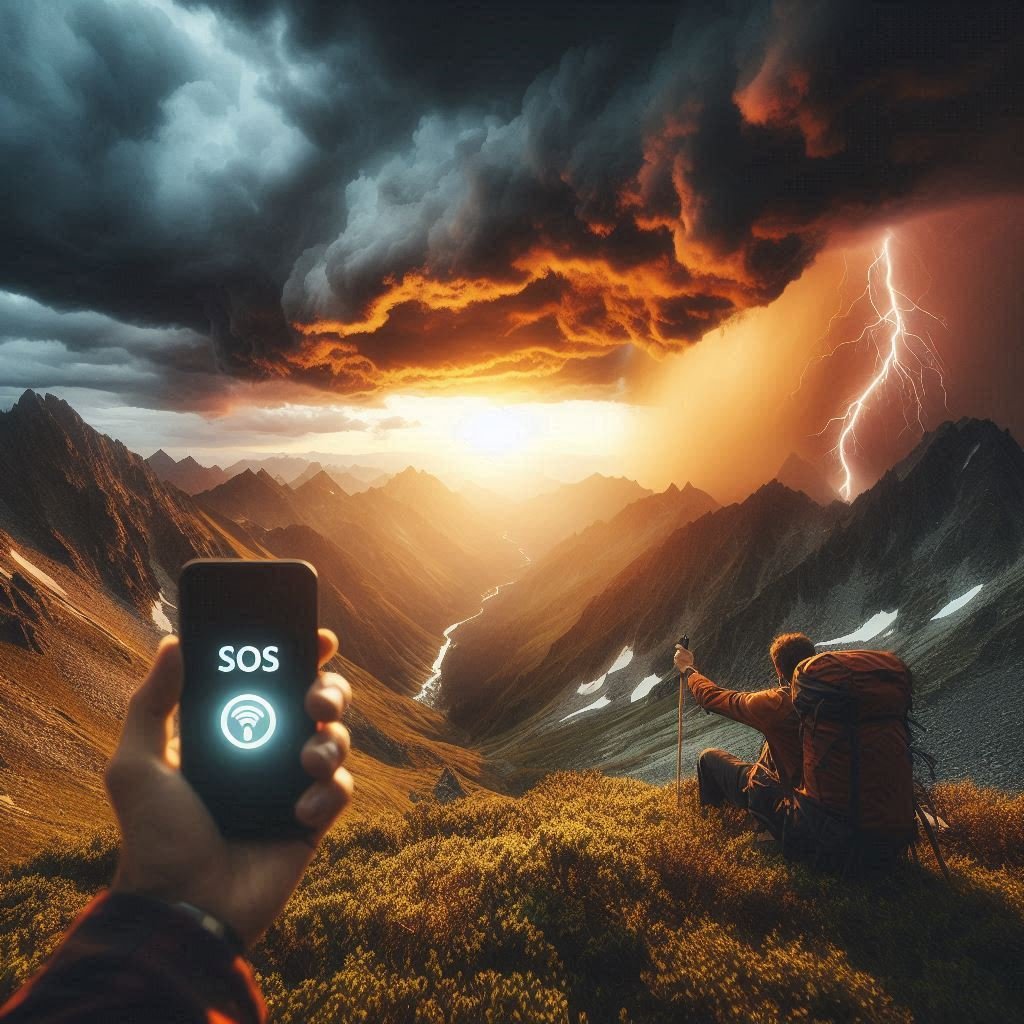

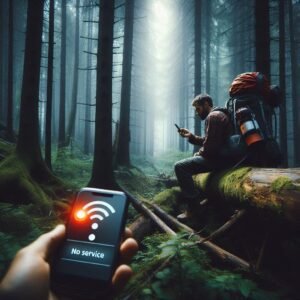
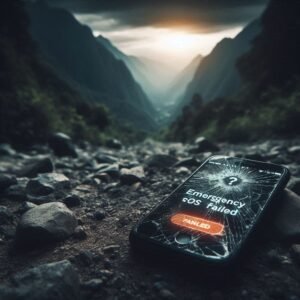
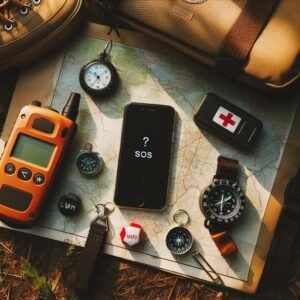


Leave a Reply